Goldendoodles come in an impressive array of colors, from classic cream to unique merle. These crossbreeds between Golden Retrievers and Poodles display a diverse palette of coat hues.
In this article, we will address the reasons behind the vast spectrum of Goldendoodle colors and explain how genetics come into play. We’ll explore the potential changes in a puppy’s coat color as it grows, and the factors that influence these changes. Special attention will be given to Merle Goldendoodles, a unique variation of this breed. Finally, we’ll provide an overview of the different types of Goldendoodle colors.
Eager to learn more about the colorful world of Goldendoodles? Let’s jump in!
Table of Contents
Why Are There So Many Goldendoodle Colors?
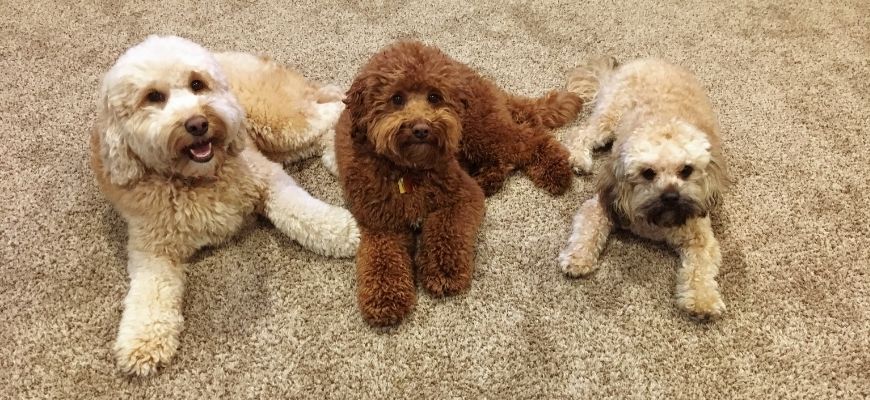
Goldendoodles have so many coat colors because of the diverse genetic makeup of their Poodle parent and the lack of strict color standardization for the breed.
While the American Kennel Club (AKC) recognizes only shades of gold for the Golden Retriever side of the lineage, Poodles carry genes for a much wider color palette including black, white, brown, cream, and more.
This, combined with potential recessive genes in Golden Retrievers and unofficial color variations in both parent breeds, leads to the stunning array of colors seen in Goldendoodles.
What Color Will My Goldendoodle Puppy Be?
Predicting a Goldendoodle puppy’s final color can be tricky due to the complex mix of genes from both Golden Retriever and Poodle parents.
The Poodle parent carries the dominant genes that primarily determine color, but these interact with the Golden Retriever’s genetic makeup and can lead to fading and unexpected patterns.
Professional breeders carefully select parent dogs and utilize generational breeding techniques to influence the likelihood of specific coat colors and types in their Goldendoodle puppies.
How Do Coat Genetics Work?
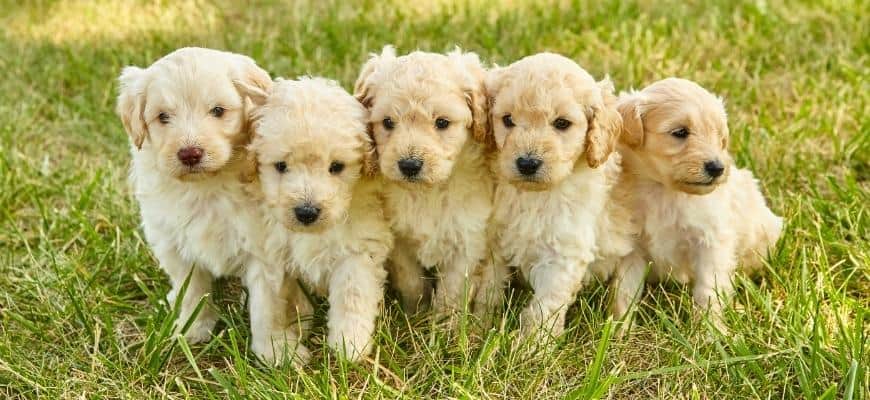
To put it simply, Goldendoodle coat genetics work like this:
- If a chocolate or black Goldendoodle has no other genes acting, the puppies will be chocolate or black.
- If the Doodle has a dominant black gene and a recessive chocolate gene, the puppy only needs one copy of the black gene to turn out black. For the pup to be chocolate, he needs two chocolate genes.
- To produce a chocolate Goldendoodle puppy, both parents must carry a chocolate gene. Golden retrievers seldom have chocolate genes, so you’ll only find a chocolate Goldendoodle puppy if the breeder used an F1B generation dog or higher.
Regardless of their coat color, every Goldendoodle has a base coat that’s either chocolate or black.
If your Doodle is a silver beige color, take a look at his nose. If your furry friend’s nose is brown, his base coat is chocolate, whereas if his nose is black, so is his base color.
It’s a Lottery!
It’s virtually impossible to guess what final color your Goldendoodle puppy will be, although a DNA test of both the little guy’s parents can give you a pretty accurate estimation.
Carrying out a DNA test will tell you about the alleles carried by the dog and whether the genes are dominant or recessive.
Alleles come in pairs. “B” represents are dominant black allele, and “B” is a recessive black allele. Because of a combination of dominant and recessive alleles, it’s quite common for two black dogs to create a brown puppy.
Will My Puppy’s Coat Change Color?

Absolutely! It’s very likely that your puppy’s coat will change color as they get older. Before you spend hours trawling the net to find a puppy of the perfect color, you need to know that your furbaby could change color as he matures!
This is normal and can happen for several reasons. Puppies often shed their softer puppy fur for a richer adult coat. As a Goldendoodle’s adult coat begins to come through, you might notice that parts of his coat retain more of their puppy color than others.
For example, the fur around the pup’s ears and muzzle often retain the original color. Genetics, sun exposure, and aging are also factors that could influence their changing coat color.
Holding and Clearing
“Holding” is the term breeders use to describe when a Goldendoodle puppy retains his coat color to maturity.
However, Goldendoodle puppy coats often fade, become dull, or lighten to a different color in a process called “clearing.”
We recommend choosing a puppy with a slightly darker coat color than you want because that color will most likely fade to a lighter version as it clears.
What Are Merle Goldendoodles?
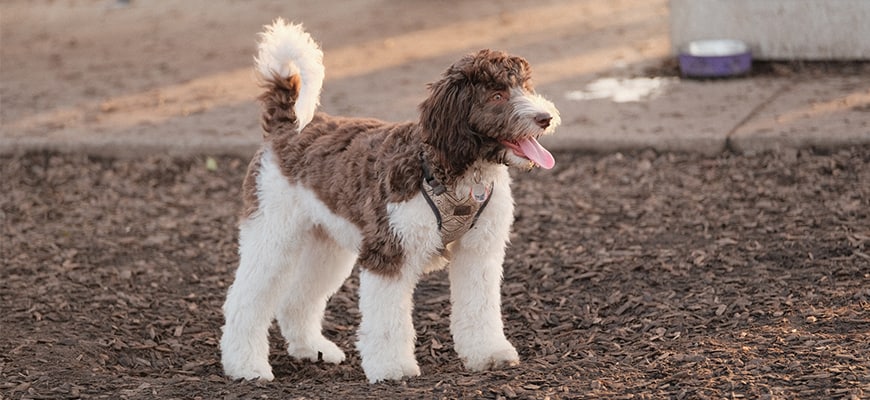
Merle Goldendoodles are a distinctive variant of the Goldendoodle breed, characterized by their unique marbled or mottled coat color pattern.
The term “Merle” refers to a genetic trait causing patches of lighter color interspersed throughout their darker base coat. These beautiful dogs exhibit a marbled or mottled pattern, making them especially attractive.
The Merle gene has three alleles: Merle (M), Cryptic Merle (Mc), and Non-merle (m). Typically, Merle Goldendoodles carry one Merle and one Non-merle allele, genetically expressed as Mm.
It’s important to note that merle coloring isn’t just about appearance; it’s tied to certain genetic factors that potential owners should be aware of.
Cryptic Merle
Cryptic merle is a term used to describe a specific coat pattern called phantom or ghost merle. Those pups usually carry the M gene without actually expressing it and typically have liver-colored or black coats with random merle patches of color.
The inheritance of M and Mc is extremely unreliable, making merle’s genetics highly complex and leading to potential health conditions in dogs that carry those genes.
Double Merle
Double merle dogs carry two copies of the M allele, that’s commonly referred to as a double merle MM. Those dogs are usually white with colored patches.
Although a double merle Goldendoodle is undoubtedly unusual and beautiful, those dogs tend to have serious health problems, including deafness and blindness.
For that reason, most ethical, responsible Goldendoodle breeders never use that combination to breed from.
What Are the Different Types of Goldendoodle Colors and Patterns?
Here are the most commonly seen Goldendoodle patterns and colors. Which one will you choose?
Brown Goldendoodle
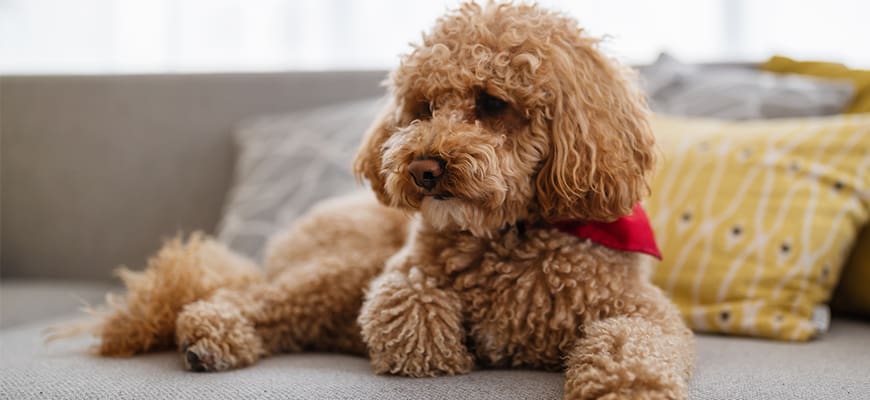
Brown Goldendoodles are very popular; you’ll see plenty of these dogs at your local dog park, and paler café-au-lait colors are also pretty abundant.
Apricot Goldendoodle

My best friend has an apricot Doodle with a silky curly coat that makes him look exactly like a sweet teddy bear!
These cute designer dogs are plentiful since the AKC recognizes the Apricot Poodle color as a breed standard.
Apricot Goldendoodles always have black points, including eye rims, eyes, nose, and nails. Apricot coats tend to clear to a cream or tan color as the dog reaches adulthood.
Cream Goldendoodle
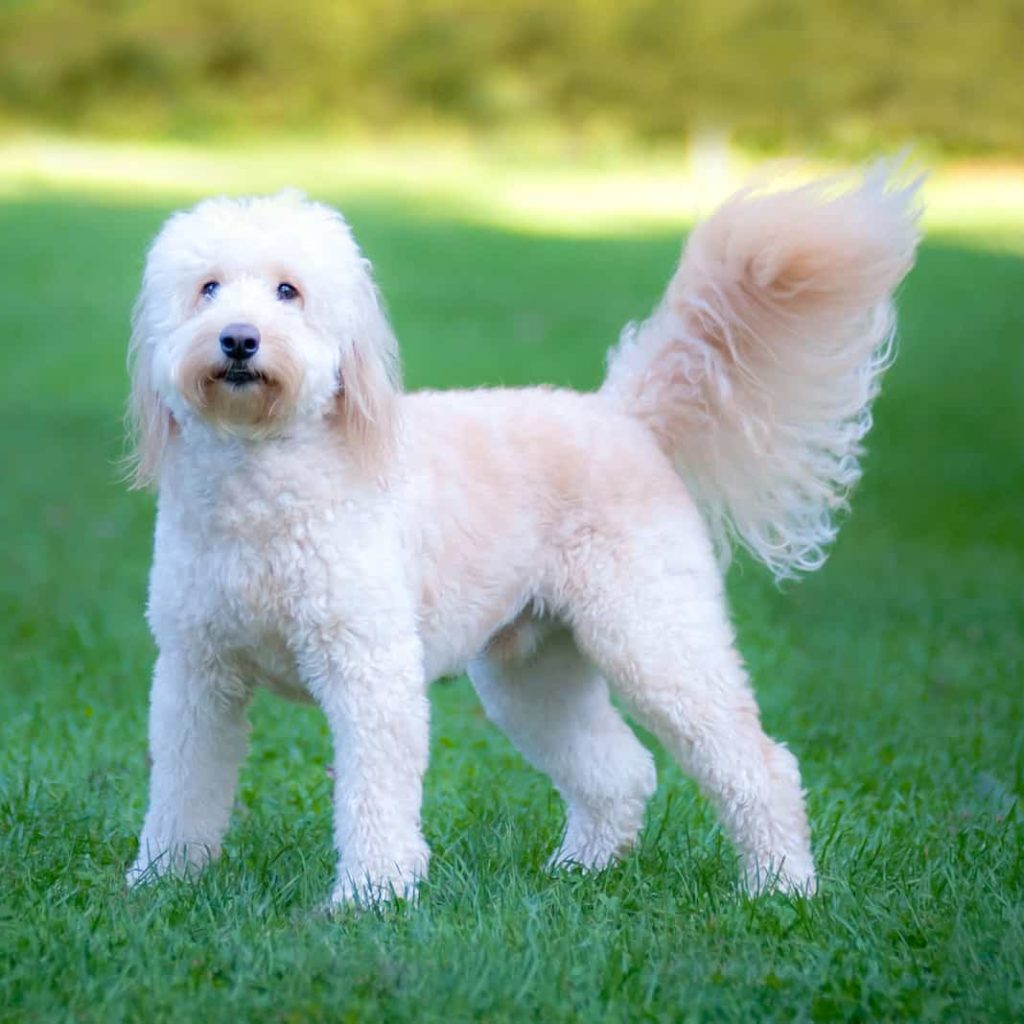
Cream Goldendoodles are sometimes called “white,” but they are officially known as cream since the AKC recognizes the cream Poodle.
Red Goldendoodle

Again, because they closely resemble teddy bears, Red Goldendoodles are extremely popular, and their bright red coat color is truly striking.
Red isn’t officially recognized by the AKC as an official Poodle or Golden retriever coat color, but breeders achieve it by breeding regular-colored retrievers with darker-colored Poodles.
Black Goldendoodles
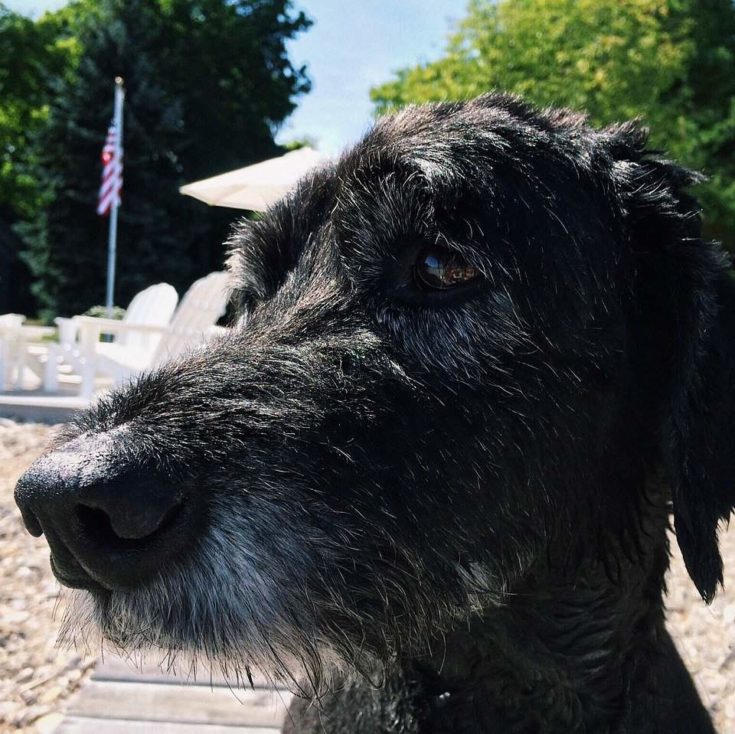
Black coat color Goldendoodoles usually have black noses, paw pads, eyes, and other physical attributes, whereas other color morphs tend to have more random colors in those areas.
Parti Goldendoodles
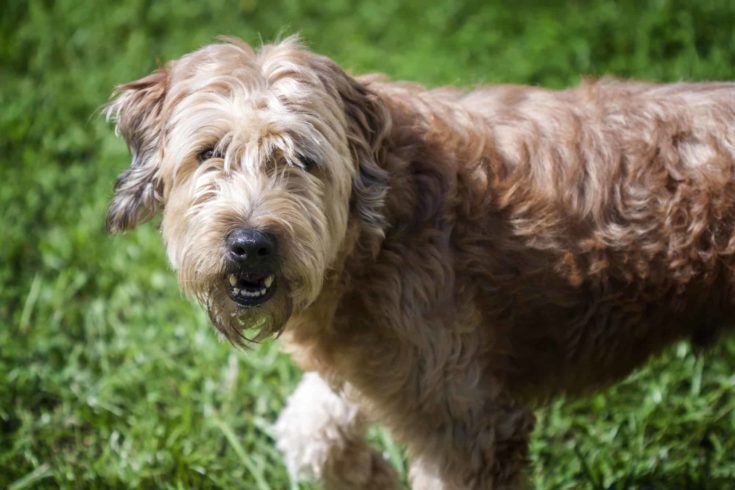
Parti Goldendoodles have a bi-colored coat, being half white and another secondary color, usually apricot or tan.
Parti-colored Doodles are produced by recessive genes that precede the solid coat color. So, it’s quite rare to find particolored Doodles that aren’t multigen with more Poodle genes in their genetic profile.
To create this color pattern, you’ll need to breed two dogs with rare recessive genes and never find two identical particolored Goldendoodles!
Tan Goldendoodle
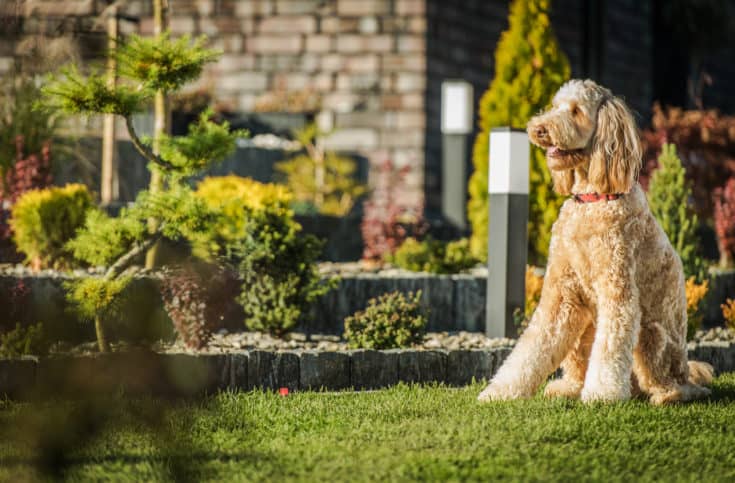
Tan Goldendoodles are a common color coat created by combining a cream color and apricot color parent dog. You’ll often see shades of white color and pale apricot in the coat, both coming from the puppy’s Golden Retriever parent.
Black and White Goldendoodle
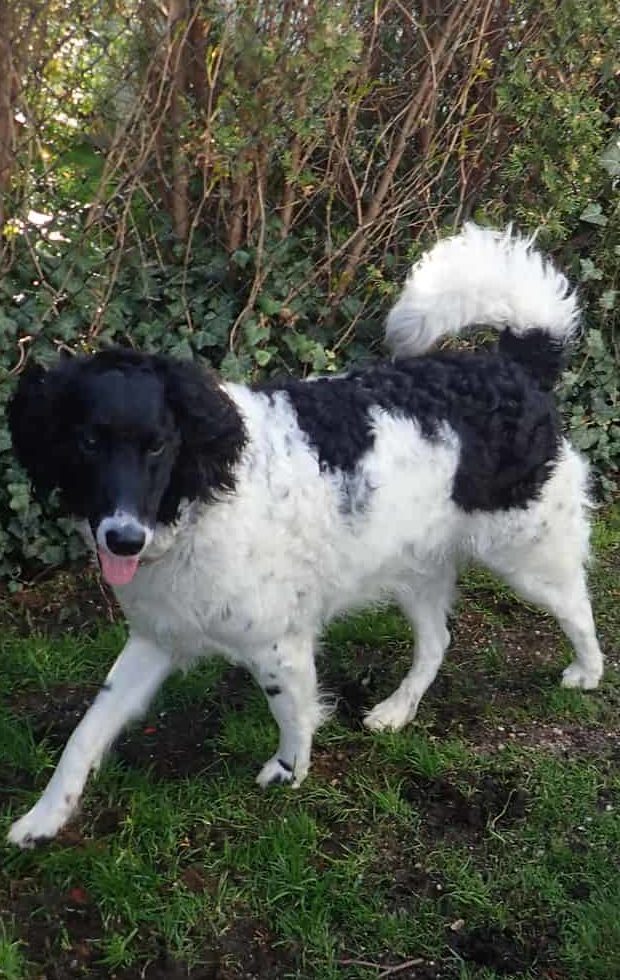
Black and white Goldendoodles, also called Tuxedo Goldendoodles, are pretty rare.
Black and white Goldendoodles have a white nose, a white chest, and a white stripe across the top of their heads. In contrast, Tuxedo Doodles have white hind legs, a white bib, and a white belly, and their back is completely black.
This rare color is created by crossing a Golden retriever and a parti Poodle, although the outcome is hit and miss!
White Goldendoodle
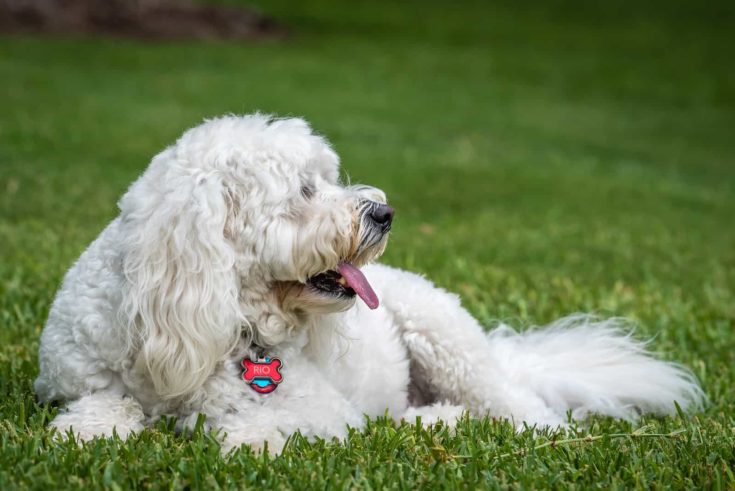
White Goldendoodles tend to be quite sensitive to skin diseases, such as skin cancer and can suffer from sunburn if they have pinkish skin.
Temperamentally, white Goldendoodles can be quite nervous and sometimes suffer from sensitive digestion.
Sable Goldendoodle
Sable Goldendoodles are born black or dark brown, clearing to a lighter tan or cream coat type as they get older.
Brindle Goldendoodle
Brindle Goldendoodles are rare dogs with a striped coat pattern created by a specific recessive gene.
The markings have red as a base color with black stripes on top. However, depending on the dog’s other genes, the stripes can appear as light flecks through the coat.
Phantom Goldendoodle
Phantom Goldendoodles are a very rare color variant of this popular hybrid dog breed.
To be classified as phantoms, these dogs must have two colors in particular locations. The primary color should cover most of the dog’s body, with the second color appearing on the dog’s muzzle, eyes, and the lower part of the legs.
Phantom Goldendoodles are usually black and tan, and no two are exactly the same.
Chocolate Goldendoodle
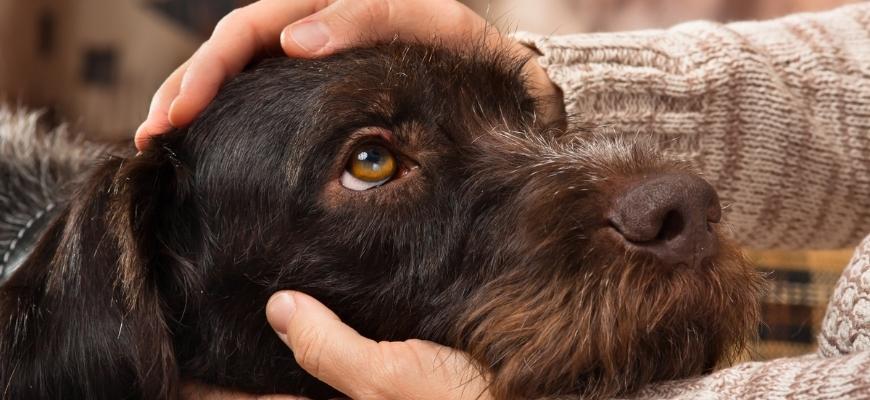
Chocolate Goldendoodles are brown dogs commonly seen since the AKC recognizes brown as an official Poodle standard.
Gray Goldendoodle
Gray and silver Goldendoodles are very similar in that they are often born black, clearing to a paler gray color by two years of age.
Keep an eye on your black puppy, as you can usually tell that your black puppy will clear to gray by the time he’s six weeks old. You could be in for a surprise!
Blue Goldendoodle
Blue Goldendoodles often begin life as black puppies, often clearing to a very dark, steel blue-gray color as adults.
Unless you have your black puppy’s DNA tested, it’s virtually impossible to tell how he’ll turn out when he matures.
Silver Goldendoodle
Again, silver and silver beige Goldendoodles are a rare color that starts with a black base color puppy, clearing to a paler silver color in adulthood.
Blue and silver Doodles often come from multigenerational parents, where the recessive coat gene is the strongest and isn’t masked by the dominant genes.
Frequently Asked Questions
Here are the answers to some of the most frequently asked questions about the different types of Goldendoodle colors available.
Q: What is the most popular Goldendoodle color?
A: The most popular color tends to be apricot Goldendoodles, followed by lighter shades of cream and then red. Golden colors are also pretty popular.
However, people’s preferences change, so it could be another color that’s top of the list by next year!
Q: What is the most common Goldendoodle color?
A: Despite their name, the most common Goldendoodle colors are brown and black!
That’s interesting since black Doodles don’t have the sought-after teddy bear looks most pet parents crave.
Generally, apricot, golden, and pale cream are the most popular colors among puppy hunters.
Q: What Is the rarest goldendoodle color?
A: The most seldom seen and rarest Goldendoodle colors are gray, blue, and silver, produced through multigenerational breeding. In fact, dogs beyond the second generation are often specifically bred to produce those rare colors.
In addition to these solid colors, you can find phantom and parti Goldendoodle patterns, two of the rarest.
The rarest Goldendoodle colors command the highest prices, with puppies often fetching up to $5,000 for a very unusual color or pattern!
Q: Are Goldendoodles high maintenance?
A: All dogs are pretty high maintenance!
When you take on a dog, you also bear the responsibility of training, exercising, and grooming your furry friend.
I didn’t realize just how much time I spent caring for my dog until she died, and I was dogless for a short time. My dog had straight hair, but it still took ages to groom her properly to remove any loose undercoat and keep matted fur at bay.
Suddenly, I had so much time on my hands that I didn’t know what to do with myself!
In the case of Goldendoodles, they are lively dogs that need plenty of exercise. Depending on the generation, your Doodle will probably need lots of daily brushing and grooming every four to six weeks.
So, caring for a Goldendoodle can be accurately described as hard work!
Final Thoughts
Goldendoodles offer a stunning spectrum of colors, from classic cream to striking merle and everything in between, making them incredibly unique designer dogs.
Remember, while color is an exciting part of choosing a Goldendoodle, prioritize finding a responsible breeder who focuses on health and temperament.
Consider the grooming needs of different colors, and be open to the joy of a surprise – the perfect Goldendoodle might come in a color you weren’t expecting!
Are you ready to welcome a colorful Goldendoodle into your family? Share your questions and favorite colors in the comments below!
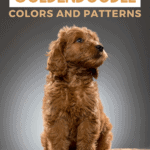
We have our first litter F1b goldendoodles and their colors are mystifying me. We have both parents Embark tested as well as had Embark run matchmaker to see possible outcomes before we bred them. The following predicted genetic outcomes were 100%: ee, KBKB, ata, DD, BB , mm, and hh. The RALY predicted outcome was 25% NN, 50% NI, 25% II, and the Slocus predicted outcomes were 50%SSp and 50%SS. Also, both parents have intense red pigmentation. With these results could some of our puppies be chocolate? I know their paws and noses can change from liver colored to black but three of these babies do appear to be dark chocolate. Any insight is greatly appreciated!
I am a school teacher and this was so thorough – I had not seen this comprehensive article of all the colors. We have a standard goldendoodle (Gracie) that could now be said to be apricot in color. She started out pretty red (what I wanted) what with a standard poodle father that was very red in color and a cream colored goldendoodle mom. So I am a little disappointed that she lost her red coloring (only slight now in certain light). Her brother (Charlie) lives down the street and has a bit more red and has more of the fluffy retriever coat, while our Gracie has more the curly poodle coat. Her brother also has a brown nose, while Gracie has a black nose.
Thank you again, as I enjoyed reading your article